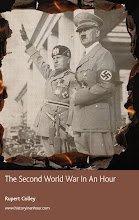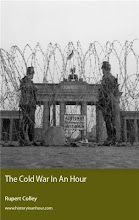On this day, January 30, 1945 - nine hours after leaving port, and seventy minutes after being hit, the huge liner, the Wilhelm Gustloff, slipped under the waves and sunk.
A small fleet of ships and boats arrived on the scene, and managed to pluck a few from the icy waters and rescued many of those on the lifeboats. Over a thousand were rescued but… an estimated 9,343 people died, half of them children - six times the 1,517 that died on the Titanic.
It remains the biggest maritime disaster in history.
We have all heard of the Titanic. Almost a century after that fateful night, the disaster remains within our global consciousness. Even before James Cameron's epic 1998 film, we knew of the iceberg, the "women and children first", the band that played on.
But how many of us have even heard of the Wilhelm Gustloff?
The luxury liner
The ship was named after the assassinated leader of the Swiss Nazi Party (yes, Switzerland in the 1930s had its own Nazi Party), murdered in his own home in February 1936.
The ship, the Wilhelm Gustloff, weighing 25,000 tons and almost 700 feet in length, was an impressive sight, and could carry almost 2,000 passengers and crew. Launched in 1937, it began its life as a luxury cruise liner for the German workers of Hitler's Third Reich, and, to the outbreak of World War Two, had sailed over fifty cruises.
Wartime
For the first year of the war the Wilhelm Gustloff served as a hospital ship before being held in dock in the port of Gotenhafen (modern-day Gdynia) on the Baltic coast where, until early 1945, it served as barracks for U-boat trainees.
Hitler had launched Operation Barbarossa, the invasion of the Soviet Union, in June 1941 and the German juggernaut had fought all the way to within sight of Moscow. But then the tide of war turned against the Nazis, and Stalin launched his own counterattack.
By October 1944, the Soviet Union's Red Army had fought the Germans out of Russia and broken through into East Prussia.
The Red Army approaches
With the apocalyptic Red Army bearing down on them, the German civilians of East Prussia, desperate to get away, fled to the Baltic ports hoping to be evacuated out. Those caught in the maelstrom of the Soviet advance faced rape and murder.
The Wilhelm Gustloff , along with any other serviceable ship in the area, was pressed into service to aid the evacuation of German civilians. With forty-eight hours notice before departure, the scenes in frozen Gotenhafen were of panic as people, frantic for a place, fought on the dock and surged to board the ship.
Evacuation
By the time it left, on January 30, 10,582 people (40% of whom were children) had crammed onto a ship designed for less than 2,000. Of the three designated military escorts, two broke down, leaving one torpedo boat to accompany the huge liner. The ship had four captains who argued over the best course to take - shallow or deep waters, a straight line for speed or zig-zags to help avoid detection. Poor visibility, heavy snow and freezing temperatures further hampered progress.
When the captains were informed of a German minesweeper convoy coming towards them, they decided, after much argument, to switch on the navigation lights to avoid colliding into the convoy, but by doing so the ship also became visible to a Soviet submarine lurking nearby.
Hit
The submarine fired three torpedoes, each hitting its target. The ensuing scenes of panic cannot be imagined. Most of the lifeboats had frozen onto their davits, leaving only a few useable. As the ship listed to one side, there were people trapped below decks, others crushed in the stairways, more falling into the freezing waters, children drowned in lifejackets too big. People fought and clubbed each other to get onto the few lifeboats, whilst many jumped to their deaths.
It was, coincidentally, the birthdate of Wilhelm Gustloff, born January 30, 1895. The day the ship sunk would have been his 50th birthday.
For an excellent website devoted to this subject, see http://www.wilhelmgustloff.com/.
Rupert Colley.
Read all about World War Two and Nazi Germany in one hour at historyinanhour.com
Subscribe to:
Post Comments (Atom)








No comments:
Post a Comment